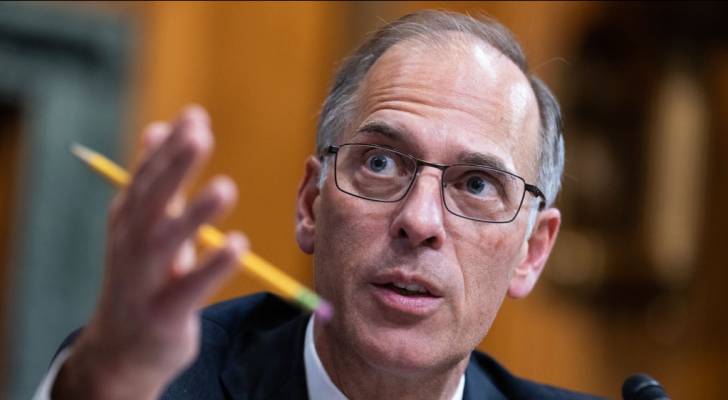Mark Zandi, chief economist at Moody’s Analytics, raised concerns about the U.S. economy following the Bureau of Labor Statistics’ latest report on August 1st.
In a post on X, he warned, “the economy is on the precipice of recession. That’s the clear takeaway from last week’s economic data dump. Consumer spending has flatlined, construction and manufacturing are contracting, and employment is set to fall. And with inflation on the rise, it is tough for the Fed to come to the rescue.”
Just days earlier, Zandi had observed that employment was the “remaining firewall between the weakening economy and recession.”
That firewall appears to be weakening: revisions to May and June job gains cut a combined 258,000 positions, bringing the three-month average increase to just 35,000 — more typical of an early recession than a healthy expansion.
The slowdown extends beyond hiring. Consumer spending growth in Q1, housing investment has declined for several months, and manufacturing output is down year-over-year.
While Q2 GDP rose 3%, much of that growth came from a drop in imports rather than strong domestic demand. Rising tariff uncertainty is also discouraging hiring and investment.
For individuals, a recession often brings job market anxiety. Layoffs and reduced hours typically hit first in sectors sensitive to economic shifts, such as construction, manufacturing, transportation, and retail.
However, any future downturn may not be limited to these industries. Advances in AI appear to be reducing demand for some white collar jobs, particularly entry-level positions. Meanwhile, government layoffs in the first half of the year could also weigh on the economy, as affected workers cut back on spending to focus on essentials.
Small businesses often feel the pinch just as acutely — and sometimes earlier. When consumers pull back on discretionary spending, revenues decline for restaurants, shops, and service providers.
Slower payments from clients and operating costs can quickly create cash flow problems. Businesses without strong reserves or adaptable operating models may be forced to cut staff, delay investments, or shut down altogether.
Story Continues
Read more: Nervous about the stock market? Gain potential quarterly income through this $1B private real estate fund — even if you’re not a millionaire. Here’s how to get started with as little as $10
The good news is that there’s still time to prepare. Strengthening your financial position starts with improving your ability to handle unexpected financial shocks.
Building an emergency fund with at least three months’ worth of living expenses can act as a buffer against sudden income loss. If you already have savings, focus on protecting and growing them by avoiding unnecessary withdrawals and keeping funds in low-risk, easily accessible accounts.
Debt is another key pressure point to address. Paying down high-interest balances not only frees up more of your income but also limits your exposure to rising borrowing costs if credit tightens.
Reviewing your monthly spending and cutting back on non-essential expenses can create extra breathing room in your budget. The earlier you make these adjustments, the less disruptive they will be if your income falls.
You might also consider diversifying your income. That could include freelance or contract work, building new skills to improve your marketability, or reconnecting with professional contacts who might open doors to new opportunities. If you run a small business, now may be a good time to bolster your cash reserves and renegotiate supplier terms.
The U.S. economy hasn’t tipped into a formal recession yet, but the warning signs are there. Whether the current slowdown turns into a full-blown downturn will depend on how key trends unfold in the coming months. While you can’t control the broader economy, you can control how you respond.
Building savings, reducing debt, trimming unnecessary expenses, and strengthening your income are all smart moves. If a recession does materialize, you’ll be better prepared to weather the storm. And if it doesn’t, you’ll still have a stronger, more resilient financial foundation.
Stay in the know. Join 200,000+ readers and get the best of Moneywise sent straight to your inbox every week for free. Subscribe now.
This article provides information only and should not be construed as advice. It is provided without warranty of any kind.
